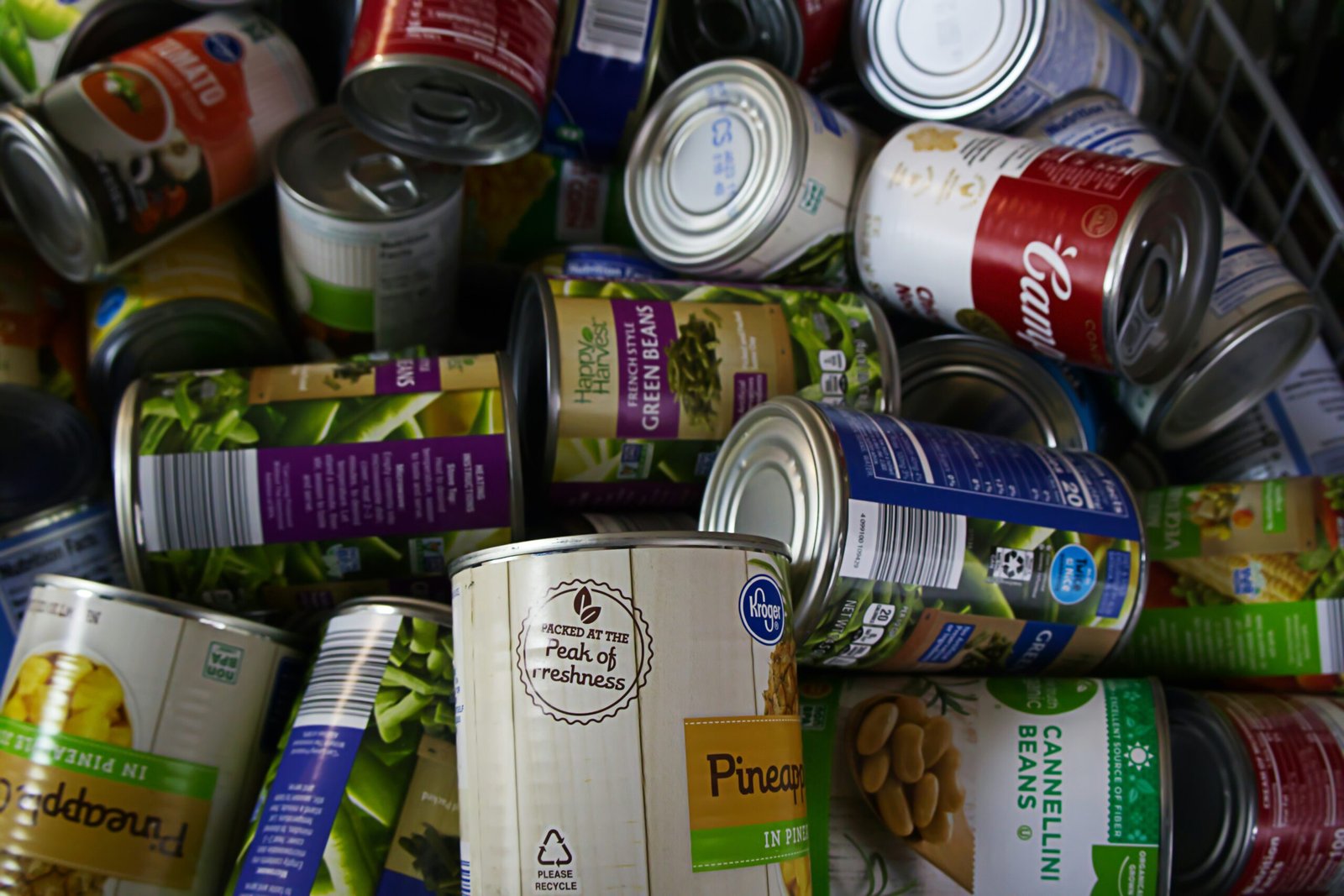When disaster strikes, your pantry becomes more than storage — it becomes survival. Whether facing natural disasters, supply chain disruptions, or unexpected emergencies, having the right foods on hand can make all the difference. The key is choosing items with long shelf lives, high nutritional value, and easy storage.
This guide highlights the best foods to stockpile for survival, plus tips on storage, purchasing, and meal planning so you can build a dependable emergency pantry with confidence.
Why Stockpiling the Right Foods Matters
Not all foods are created equal in emergencies. The best options are:
- Long-lasting – They remain safe and edible for years.
- Nutrient-dense – They provide essential calories, protein, and vitamins.
- Easy to store – They require minimal space and no refrigeration.
Selecting foods with these qualities ensures you’ll have a reliable supply that sustains energy and health, even during extended crises.
Top Foods to Stockpile
Here are survival food staples with proven durability and nutritional value:
1. Pasta
- Shelf life: 10–30 years when stored in mylar bags with oxygen absorbers.
- Benefits: Versatile base for meals; cooks quickly and provides essential carbohydrates.
2. White Rice
- Shelf life: Up to 25 years under proper storage conditions.
- Why it’s better: Outlasts brown rice, which spoils faster due to natural oils.
3. Canned Goods
- Shelf life: 5–10 years when stored in a cool, dark place.
- Options: Vegetables, meats, soups, and sauces for balanced meals.
4. Oats
- Benefits: Nutrient-rich, great for breakfast, and can be used in baking.
- Storage: Bulk-friendly and cost-effective.
5. Dried Beans
- Shelf life: 25+ years when stored correctly.
- Nutritional value: Excellent source of protein and fiber.
6. Nuts & Peanut Butter
- Benefits: Calorie-dense and protein-rich for sustained energy.
- Shelf life: 1–2 years for nuts; 2+ years for peanut butter.
If you’d like to simplify stockpiling these essentials, My Patriot Supply offers bulk #10 food cans that include many of these staples. Their long-term food storage options can save time and ensure your pantry is always ready.
Together, these foods provide a balance of carbohydrates, proteins, and fats — the foundation of a resilient survival pantry.
Featured Resource: Long-Term Food Storage Made Simple
Looking for a ready-made solution?
My Patriot Supply’s bulk #10 cans provide professionally packaged, shelf-stable foods with storage life measured in decades.
They’re ideal if you want to save time, reduce repackaging, and build a dependable pantry quickly.
Expert Tips for Building Your Survival Pantry
Choose Foods with Proven Longevity
Prioritize foods with long shelf lives and high nutrient density. Freeze-dried meals, MREs, and dried legumes are excellent long-term options. Brands like My Patriot Supply provide professionally packaged survival foods with extended shelf life, helping you avoid repackaging hassles.
Read Labels Carefully
Compare nutritional content, serving sizes, and calories to ensure each item supports your needs.
Support Local Brands
Smaller or regional suppliers may offer quality, ethically sourced options while boosting your local economy.
Balance Your Pantry
- Carbs: Rice, oats, pasta
- Proteins: Canned meats, beans, peanut butter
- Fats: Nuts, seeds, oils (in smaller quantities due to shorter shelf life)
Plan Your Budget
- Calculate cost per serving.
- Rotate foods regularly to avoid waste.
- Aim for at least 2,000 calories per person daily.
Storing Your Emergency Foods
Proper storage makes all the difference:
- Use airtight containers or mylar bags with oxygen absorbers.
- Keep foods in cool, dark environments (ideally below 75°F).
- Rotate stock every 6–12 months to maintain freshness.
Final Takeaway
Building a survival pantry doesn’t have to be overwhelming. By choosing foods with long shelf lives, strong nutritional value, and smart storage practices, you’ll create a reliable safety net for you and your family. With the right strategy — and trusted suppliers like My Patriot Supply — your emergency food stockpile becomes more than supplies; it becomes peace of mind.
FAQ: Survival Food Stockpiling
Q: What foods last the longest?
A: White rice, honey, sugar, and salt can last indefinitely. Pasta, beans, and canned goods can last 10–30 years if stored properly.
Q: How much water should I store?
A: At least one gallon per person per day, covering drinking, cooking, and hygiene. Plan for a minimum 30-day supply.
Q: What are the best proteins to stockpile?
A: Canned meats, dried beans, nuts, peanut butter, and freeze-dried meals.
Q: How can I turn stored foods into meals?
A: Pair rice and beans with herbs, combine pasta with canned vegetables, or create oat-based breakfasts with dried fruits.
Q: How long should my emergency supply last?
A: Aim for at least 30 days of non-perishable food, providing 2,000 calories per person daily.

